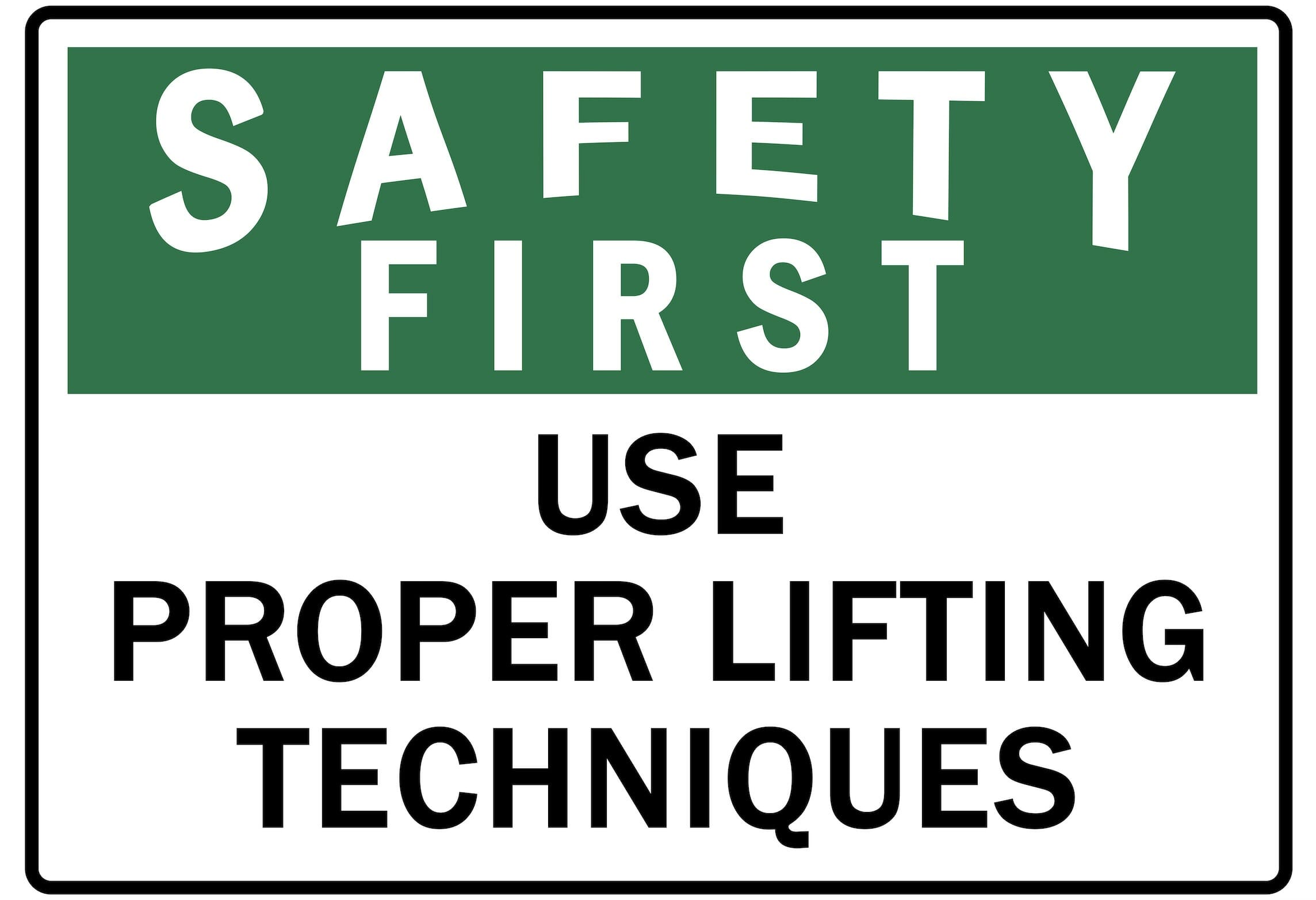Safety Call: Proper Lifting Techniques
New Braunfels, TX, May 17, 2023

Why Are Lifting Ergonomics Important? Back injuries account for one in five workplace injuries, and 75% of workplace-related back injuries occur during a lifting task. Every year, two million back injuries occur across the U.S.; roughly half of them (one million) are back injuries sustained in the workplace. Back pain becomes chronic and disabling in roughly 5% of cases, and up to 44% of people who initially recover have a reoccurrence within a year. Then once you’ve had two episodes of back pain in a year, you’re three times more likely to experience the third episode. When lifting you must always utilize proper lifting techniques. All loads exceeding 85 lbs. must be two-person/companion lifts. We recommend you should never exceed lifting 170 lbs. without the use of a mechanical lifting aid.
Here are three key reminders to remember when lifting objects.
PLAN FIRST, THEN LIFT
First, you need to evaluate the lifting task for safety. Know how much you can safely lift and ensure the load doesn’t exceed it. Assess whether the object is too large or awkward to lift and carry safely. Will you be able to get a good grip? You need to know where you’re putting the object ahead of time. Ensure the path is unobstructed, the floor is dry, and the distance isn’t too great for safety. If the load is too heavy or awkward, will obstruct your vision, and needs to be carried too far or lifted overhead, you’ll need to find a safe alternative. Is it a two-person job? Do you need a hand truck, dolly, pushcart, or another tool? Could gloves give you a better grip? Once you have a plan for lifting ergonomics, you should stretch and warm up your muscles before lifting. Loosen up your back with lower-back rotations. Stretch your hamstrings and get the blood flowing – these measures will reduce your risk of injury.
PRACTICE SAFE LIFTING ERGONOMICS
You’ve probably heard, “lift with your knees, not with your back” but what does that mean? It means you should never bend forward to lift a heavy object. Instead, you should squat, secure the load, and stand by straightening your legs while keeping your back straight or slightly arched. Safe lifting involves: Standing as close to the load as possible, Planting your feet shoulder-width apart with one foot slightly ahead of the other. Bending at the hips and knees only until you’re deep in a squatting position. Keeping your head up and straight with your shoulders back to keep your back straight. Holding the load close to your body at waist height and engaging your core muscles as you push against the ground and straighten your legs.
UTILIZE TWO PERSON LIFTS WHEN NECESSARY
A two-person lift is a carrying technique that is used when an object is too large for one person to carry alone. It is important that the two people lifting an object work in unison, or they could be setting themselves up for injury. The two people should also be about the same height. They need to decide in advance which person will take the lead in directing the movement. When performing a two-person lift, keep the knees bent and the back straight. The two people should lift and raise the load at the same time, so communication is essential. Try to move smoothly and as one as you negotiate your way to your destination. You should keep the object straight, rather than on an angle where possible. When unloading, you should do so together, ensuring that your knees remain bent. When going up or down stairs, the person who is the tallest should be at the bottom.
If you would like more information on this topic or any other safety-related topic, please reach out to the Ontivity safety team at safety@ontivity.com, and we will get you taken care of.
